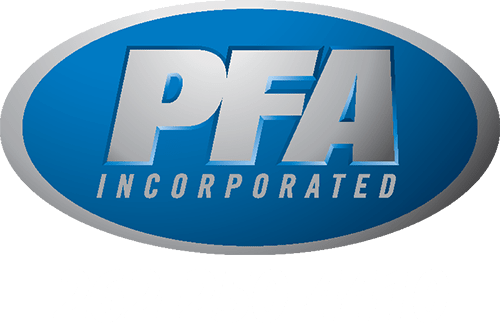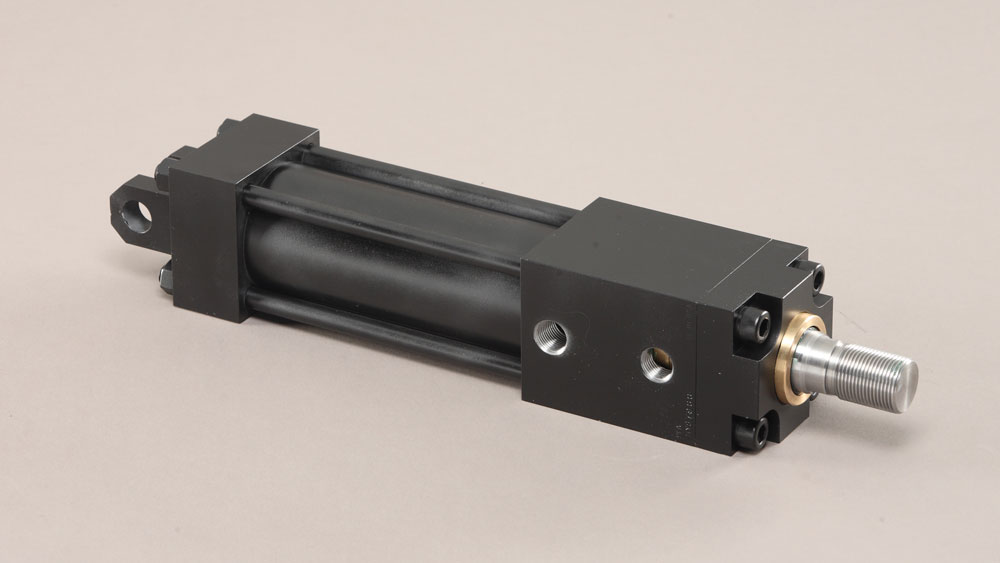In this article, we will explain how PFA Inc’s Lock-On-Extend cylinder types can enhance your manufacturing processes and some of the ways they achieve these results. With our strong, compact design, you will often be able to achieve the results of a much larger cylinder at a fraction of the cost and do things you never thought possible with what looks like a standard two port cylinder.
In many cases, Lock-On-Extend Self-Locking cylinders are utilized in processes that require high holding forces and often even higher holding capacity (locked capacity). For this reason, PFA HYS heavy hydraulic style self-locking cylinders are the perfect choice when moving force requirements are large and applications require 1) consistent holding forces during an unexpected loss of hydraulic pressure or 2) a positive non-moving stop for anvil/staking/impact applications. Semi-permanent holding of doors, platforms, valves, or other critical components is possible as pressure can be removed or drop to zero and holding force is maintained. Applications requiring a positive position during a high force operation (staking/nailing/inserting/crimping) benefit from the ability pick up the part before and lower the part after the high force operation. PVS air/light hydraulic style self-locking cylinders are very similar, provide operation with air which is popular with automation work cells, while still providing an extremely high locking capacity.
As locking occurs at the end of the extend stroke, it is important to ensure that the self-locking cylinders fully extend to engage the lock. Depending on the manufacturing process, equipment may have restrictions preventing full stroke. To alleviate this common manufacturing issue, PFA Inc. offers Lock-On-Extend cylinders that are easily configured to match up to existing mountings. Typical NFPA mounting standards are available to provide better interface opportunities and careful rod end selection may be used with rod end adjustments designed in, allowing for easier control of the final positioning. Easy installation and very high lock holding capacities in a small size have made PFA Inc. the top choice for manufacturers worldwide.
Standard product configurations have a moderate lockup overtravel window of .004” to .013” beyond the seating lock position. Thus, after locking, as the pressure is decreased or a load is applied, the rod will move slightly backward in the window until the locking mechanism rests on the internal structure to support the load. IN many applications, this small movement is unnoticeable. In applications where movement would impact the application, overtravel achieved during the setup process can easily be reduced through the adjustment of the load position at the rod-to-load interface. However, if your current application requires a more precise lockup window than typically provided or no movement from the fully forward position, PFA may recommend our preloading and locking cylinders designed with a zero movement capability popular in molding, diecasting, and other high demand preloading applications. Typically introducing simple stops and shims is the best option to achieve better control and successful positioning in standard product, but PFA offers free application reviews and we routinely provide recommendations regarding unique applications.
If you still have questions about how lock-on-extend cylinders function in a variety of support and high force applications, a PFA Inc. specialist will be happy to assist you.
For more information about the potential uses of our Lock-On-Extend cylinder types, we encourage you to visit the product overview page. Here you can see how the lock works and learn more about the benefits – control, protection, and strength – of our unique Lock-On-Extend cylinders.


